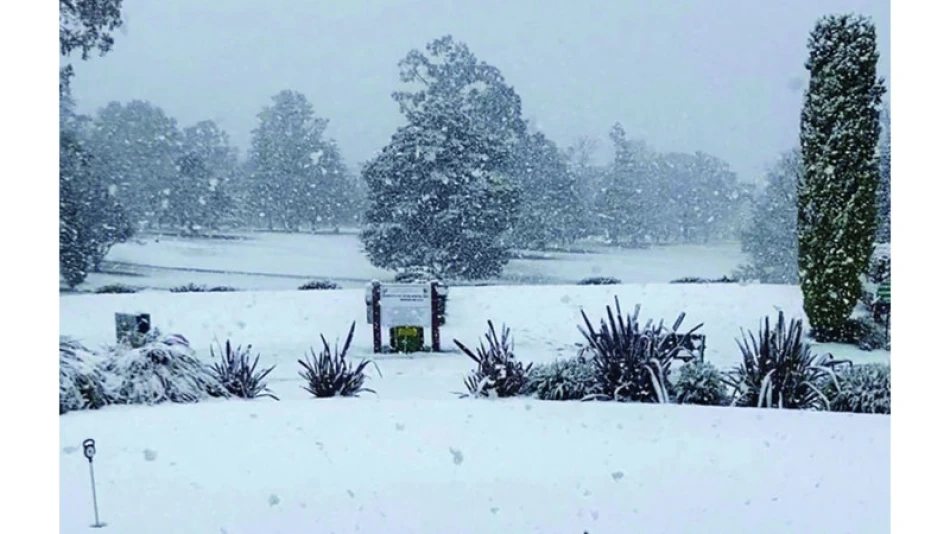
Rare Snowfall Blankets Parts of Australia, a Remarkable Sight Unseen in Decades
Australia's Heaviest Snowfall in Decades Paralyzes Eastern States
Eastern Australia has been buried under its thickest snowfall since the 1980s, with some areas receiving up to 40 centimeters of snow as a powerful cold front swept through the region. The extreme weather event has left over 100 vehicles stranded, triggered more than 1,400 emergency responses, and plunged tens of thousands of homes into darkness, highlighting the increasing volatility of Australia's climate patterns.
Record-Breaking Snow Accumulation Hits Multiple States
The Bureau of Meteorology confirmed that New South Wales, Australia's most populous state, bore the brunt of the storm, with snow depths reaching levels not seen since the mid-1980s. Miriam Bradbury, a meteorologist with the Australian Bureau of Meteorology, described the event as exceptional both in terms of accumulation and geographic spread.
Queensland also experienced its first significant snowfall in a decade, demonstrating the unusual scope of this weather system. The northern tablelands were particularly affected, with the white blanket extending far beyond typical snow-prone areas.
Emergency Services Overwhelmed by Weather Crisis
The State Emergency Service recorded 1,455 separate incidents as the storm system moved through the region. Beyond the immediate challenge of snow removal and vehicle rescues, the severe weather caused substantial infrastructure damage and prompted multiple flood warnings.
Human Cost and Ongoing Rescue Operations
The extreme conditions have taken a human toll, with police in New South Wales continuing search operations for a woman in her twenties who was swept away by floodwaters after her vehicle became trapped. The incident underscores the deadly combination of snow, ice, and flooding that accompanied this weather event.
Tens of thousands of households spent the night without electricity as power lines succumbed to the weight of snow and ice, creating additional hardship during the coldest conditions in decades.
Climate Change Amplifies Weather Extremes
This snowfall event reflects a broader pattern of increasingly volatile weather across Australia. While the continent has experienced more frequent extreme heat events and bushfires in recent years, this cold snap demonstrates that climate change manifests through intensified weather patterns at both ends of the spectrum.
The rarity of such events—occurring only a handful of times in Australia's recorded history—makes them particularly disruptive to infrastructure and emergency services that are not equipped for such extreme cold weather scenarios.
Economic and Infrastructure Implications
The widespread nature of this weather event will likely have significant economic consequences for the affected regions. Transportation networks, agricultural operations, and energy distribution systems face substantial recovery costs. The combination of flooding and heavy snow creates particularly challenging conditions for infrastructure repair and maintenance.
The event serves as a reminder of Australia's vulnerability to extreme weather, regardless of whether it manifests as record heat, devastating bushfires, or unprecedented snowfall. As climate patterns become more unpredictable, the need for resilient infrastructure and comprehensive emergency preparedness becomes increasingly critical for the continent's 26 million residents.
 Sara Khaled
Sara Khaled







